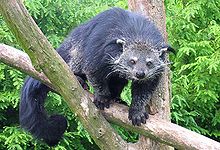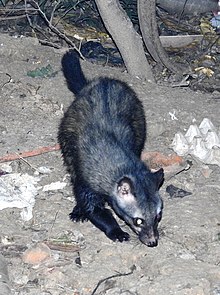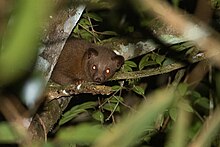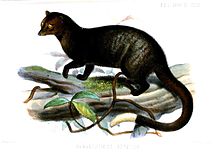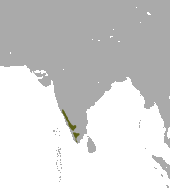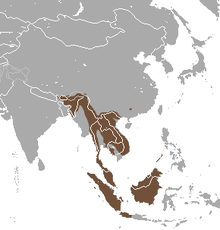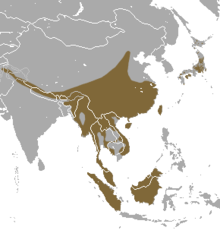
Viverridae is a family of small to medium-sized, feliform mammals. The viverrids comprise 33 species placed in 14 genera. This family was named and first described by John Edward Gray in 1821. Viverrids occur all over Africa, southern Europe, and South and Southeast Asia, across the Wallace Line.

Paradoxurus is a genus of three palm civets within the viverrid family that was denominated and first described by Frédéric Cuvier in 1822. The Paradoxurus species have a broad head, a narrow muzzle with a large rhinarium that is deeply sulcate in the middle. Their large ears are rounded at the tip. The tail is nearly as long as the head and body.
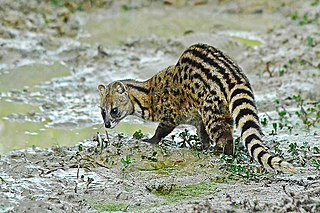
The small Indian civet is a civet native to South and Southeast Asia. It is listed as Least Concern on the IUCN Red List because of its widespread distribution, widespread habitat use and healthy populations living in agricultural and secondary landscapes of many range states.

The small-toothed palm civet, also known as the three-striped palm civet, is a viverrid native to dense forests of Southeast Asia, from the Assam district of India to Indochina and the Malay Peninsula and on Sumatra, Bangka, Java, Borneo, and numerous small nearby islands of Indonesia.

The masked palm civet, also called the gem-faced civet or Himalayan palm civet, is a viverrid species native to the Indian subcontinent and Southeast Asia. It has been listed as least concern on the IUCN Red List since 2008 as it occurs in many protected areas, is tolerant to some degree of habitat modification, and widely distributed with presumed large populations that are unlikely to be declining.
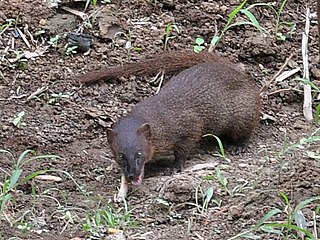
The Javan mongoose is a mongoose species native to Southeast Asia.

The Viverrinae represent the largest subfamily of the Viverridae comprising three genera, which are subdivided into six species native to Africa and Southeast Asia. This subfamily was denominated and first described by John Edward Gray in 1864.
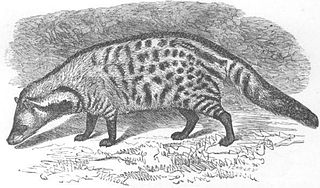
Viverra is a mammalian genus that was first named and described by Carl Linnaeus in 1758 as comprising several species including the large Indian civet. The genus was subordinated to the viverrid family by John Edward Gray in 1821.

The Hemigalinae are a subfamily of the viverrids denominated and first described by John Edward Gray in 1864. Hemigalinae species are native to Southeast Asia from southern China through Indochina, Malay Peninsula to Sumatra, Borneo and Sulawesi.

Urva is a genus comprising the Asian mongooses within the mongoose family Herpestidae. Species in the genus were formerly classified in the genus Herpestes, which is now thought to comprise exclusively African mongooses; phylogenetic evidence indicates that the Asian mongooses form a monophyletic group and had an Asian common ancestor. Urva forms a clade with Xenogale and Atilax, while Herpestes forms a clade with all other African mongoose species.
